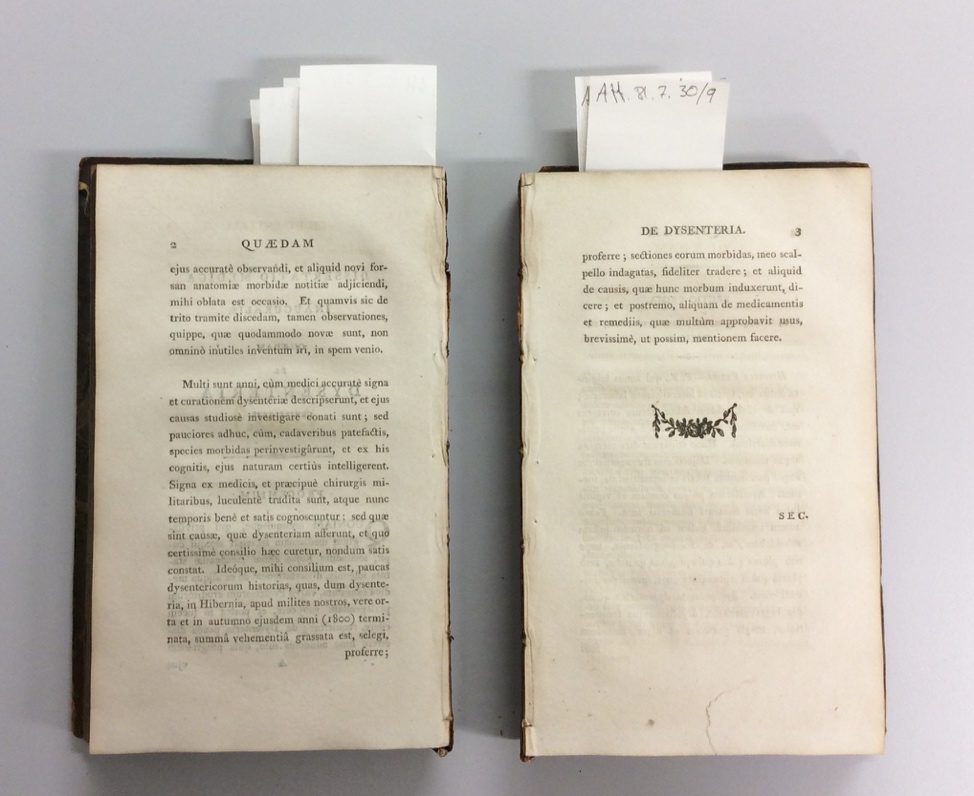Our Projects Conservator, Nicole, describes a technique for repairing books that have broken in half in this week’s blog…
I have now moved full time to the conservation studio at the main library and I have started working on the Latin thesis from 1726 – 1826 which contain a number of PhD thesis in one leather binding.
The majority of this collection is in good condition with just under half needing conservation treatment before digitisation, mostly quick treatments such as being board reattachment. A small number of volumes have been rebound with a hollow and using book cloth which makes them more accessible and easier to be digitised. However, 46 volumes have broken sewing resulting in the text block breaking in half or in some cases three or four separate pieces. This has been caused by repeated use, and forcing the volumes open.

An example of a Latin thesis broken in half, before conservation
Reattaching two halves of a volume can be time consuming and with such a high number we needed to find a treatment that was relatively quick but was strong enough for digitisation. The volumes could not be digitised in the condition they were in because this would cause sections to become loose and pages could easily become lost.
After some research and testing it was decided the most successful way for the volumes to be digitised was to mechanically remove the spine and consolidate the sections by relining the spine. Firstly, the leather spine was removed using a spatula. The animal glue was then softened using a poultice of wheat starch paste, and removed using a spatula. The labels were retained so they could be re-adhered after treatment.

Latin thesis, after conservation. Volume is now whole.
Once the spine was clean four layers of medium weight Japanese paper were added with wheat starch paste. After this a layer of archival paper was added to the spine for added strength and to protect the Japanese paper. Once dry the label was re-adhered and an enclosure made out of archival board was added around the volume. This will protect and keep the spine clean when the book travels to be digitised and when on the shelf. Although the binding is back as a whole, it will be digitised using an angle support at a 90 degree angle which will put less pressure on the spine.

Latin thesis being digitised using an angle support

Pingback: A Book of Two Halves | PhD digitisation project